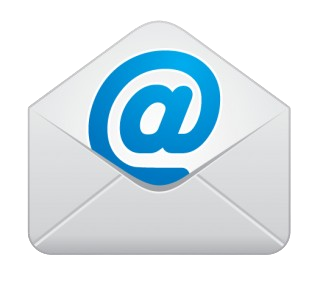Impacts of Climate Change on Vector-Borne Diseases of Animals and Humans with Special Emphasis on Afghanistan
A Review
DOI:
https://doi.org/10.62810/jnsr.v2i1.35Keywords:
Animal production, Climate change impacts, Re-emergence, Afghanistan, Emergence, Seasonal variation, Vector-borne diseasesAbstract
Vectors are organisms that transmit pathogenic microorganisms among animals and humans. Infections transmitted by the bites of blood-sucking arthropods are called vector-borne diseases (VBDs). This review highlights the impacts of climate change on the distribution, seasonal variation, and socioeconomic effects of VBDs in affected countries, especially Afghanistan. There is good enough evidence indicating that recent climate change has affected the interaction of the vector-pathogen-host cycle in many parts of the world. The emergence and re-emergence of bluetongue virus (BTV), Rift Valley Fever (RVF), lumpy skin disease (LSD), West Nile Virus (WNV), and malaria in new areas previously considered free of the diseases, and shift of seasonal occurrence of many VBDs in endemic areas, are the clear examples of climate change impacts on VDBs. Although significant progress has been made regarding VBD surveillance systems, diagnostic capacity, vaccine development, and vector control programs in resource-rich countries, failure in adaptation programs and ineffective mitigation strategies against VBDs in developing countries, especially in low and middle-income countries (LMICs), including Afghanistan facilitate widespread distribution of VBDs in these regions. Furthermore, developing drug resistance among the pathogens and their vectors makes the conditions more suitable for VBDs wide dispersion. Such situations cause severe health and socio-economic burdens to affected countries. Developing early-warning systems for detecting VBDs, identifying and developing resistant livestock species and breeds, and applying interceptive measures based on integrated research programs are crucial to effectively reduce the harmful impacts of VBDs on human and animal populations.
Downloads
References
Adegboye, O. A., Al-Saghir, M., & LEUNG, D. H. (2017). Joint spatial time-series epidemiological analysis of malaria and cutaneous leishmaniasis infection. Epidemiology & Infection, 145(4), 685-700. DOI: https://doi.org/10.1017/S0950268816002764
Alves, C. (2021). Preventing new diseases by tackling Climate Change. Academia Letters, Article 2338. https://doi.org/10.20935/AL2338. DOI: https://doi.org/10.20935/AL2338
Artois, M. (2012). The role of wildlife in the control of domestic animal diseases. OIE Comm. Régionale Eur, 8.
Baylis, M. (2017). Potential impact of climate change on emerging vector-borne and other infections in the UK. Environmental Health, 16(1), 45-51. DOI: https://doi.org/10.1186/s12940-017-0326-1
Bianchini, J., Simons, X., Humblet, M. F., & Saegerman, C. (2023). Lumpy skin disease: a systematic review of mode of transmission, risk of emergence and risk entry pathway. Viruses, 15(8), 1622. DOI: https://doi.org/10.3390/v15081622
Byrd, B., Richards, L. R., Runkle, D. J. Margaret M. Sugg, M. M (2020). Vector-borne Diseases and Climate Change: North Carolina’s Policy Should Promote Regional Resilience, NCMJ 81(5).324-330. DOI: https://doi.org/10.18043/ncm.81.5.324
Caminade, C., McIntyre, K. M., & Jones, A. E. (2019). Impact of recent and future climate change on vector‐borne diseases. Annals of the New York Academy of Sciences, 1436(1), 157-173. DOI: https://doi.org/10.1111/nyas.13950
Caminade, C., McIntyre, M. K., & Jones, A. E. (2016). Climate change and vector-borne diseases: where are we next heading? The Journal of Infectious Diseases, 214(9), 1300-1301. DOI: https://doi.org/10.1093/infdis/jiw368
Campbell-Lendrum, D., Manga, L., Bagayoko, M., & Sommerfeld, J. (2015). Climate change and vector-borne diseases: what are the implications for public health research and policy? Philosophical Transactions of the Royal Society B: Biological Sciences, 370(1665), 20130552. DOI: https://doi.org/10.1098/rstb.2013.0552
Carlson, C. J., Albery, G. F., Merow, C., Trisos, C. H., Zipfel, C. M., Eskew, E. A., ... & Bansal, S. (2022). Climate change increases cross-species viral transmission risk. Nature, 607(7919), 555-562. DOI: https://doi.org/10.1038/s41586-022-04788-w
Dahmana, H., & Mediannikov, O. (2020). Mosquito-borne diseases emergence/resurgence and how to effectively control it biologically. Pathogens, 9(4), 310. DOI: https://doi.org/10.3390/pathogens9040310
FAO (2023). TCP/AFG/3901-E & OSRO/AFG/2018/CHG - Lumpy skin disease vaccination program in Afghanistan, Retrieved from: https://mediabase.fao.org/stock-photo-21-march-2023-nuristan-province-afghanistan--fao-representative-images-image00278193.html
Grace, D., Bett, B. K., Lindahl, J. F., & Robinson, T. P. (2015). Climate and livestock disease: assessing the vulnerability of agricultural systems to livestock pests under climate change scenarios. CCAFS Working Paper.
Haider, A., Maryam, H., Waqas, U., Fatima, M., Abbas, Z., et al. (2023). The Economic Impact of Lumpy Skin Disease and Cost-Effectiveness of Vaccination for the Control of Outbreaks in Pakistan. Vet Med Animal Sci. 6(1), 1125. DOI: https://doi.org/10.33582/JVetMedAnimalSci.2023.1125
Halabi, S. F. (2020). Adaptation of animal and human health surveillance systems for vector-borne diseases accompanying climate change. The Journal of Law, Medicine & Ethics, 48(4), 694-704. DOI: https://doi.org/10.1177/1073110520979375
Jabeen, A., Ansari, J. A., Ikram, A., Khan, M. A., & Safdar, M. (2022). Impact of climate change on the epidemiology of vector-borne diseases in Pakistan. Global Biosecurity, 4. DOI: https://doi.org/10.31646/gbio.163
Jourdain, F., & Paty, M. C. (2019). The impact of climate change on vectors and vector-borne diseases in France. Les Tribunes de la sante, 61(3), 41-51. DOI: https://doi.org/10.3917/seve1.061.0041
Khatoon, S., Bhattacharya, P., Karuveettil, V., Mahapatra, B., Mathew, S., Thakur, R., ... & John, D. (2023). Association of climate change and vector-borne diseases in South Asia: a systematic review protocol. DOI: https://doi.org/10.21203/rs.3.rs-3257293/v1 DOI: https://doi.org/10.21203/rs.3.rs-3257293/v1
Kimaro, E. G., Toribio, J. A. L., & Mor, S. M. (2017). Climate change and cattle vector-borne diseases: Use of participatory epidemiology to investigate experiences in pastoral communities in Northern Tanzania. Preventive veterinary medicine, 147, 79-89. DOI: https://doi.org/10.1016/j.prevetmed.2017.08.010
Ma, J., Guo, Y., Gao, J., Tang, H., Xu, K., Liu, Q., & Xu, L. (2022). Climate Change Drives the Transmission and Spread of Vector-Borne Diseases: An Ecological Perspective. Biology, 11(11), 1628. DOI: https://doi.org/10.3390/biology11111628
Madadi, S., Arif, S., Ansari, M., Amiry, G. Y., Ziaulhaq Kaihan, Z. (2023). A cross-sectional study on the prevalence of cutaneous leishmaniasis in Kabul, Afghanistan from 2020 to 2021. Afghanistan Journal of Infectious Diseases, 1(1), 14-18. DOI: https://doi.org/10.58342/ajid/ghalibuni.v.1.I.1.4
Magiri, R., Muzandu, K., Gitau, G., Choongo, K., & Iji, P. (2021). Impact of climate change on animal health, emerging and re-emerging diseases in Africa. African Handbook of Climate Change Adaptation, 1-18. DOI: https://doi.org/10.1007/978-3-030-42091-8_19-1
Martin, V., Chevalier, V., Ceccato, P., Anyamba, A., De Simone, L., Lubroth, J., ... & Domenech, J. (2008). The impact of climate change on the epidemiology and control of Rift Valley fever.
Mekonnen, N. (2018). The Impact of Climatic Change on Animal Disease Ecology, Distribution and Emergence: A Review. Archives of Applied Science Research, 10 (1), 14-20.
Nejash, A., & Kula, J. (2016). Impact of climate change on livestock health: A review. Global Veterinaria, 16(5), 419-424.
Ogden, N. H. (2017). Climate change and vector-borne diseases of public health significance. FEMS microbiology letters, 364(19), fnx186. DOI: https://doi.org/10.1093/femsle/fnx186
Oza, J., Bhatt, D., Patel, K., & Trivedi, J. (2020). Study of prevalence of tick Hyalomma excavatum (Acari: Ixodidae) on Bubalus bubalis in Patan District, Gujarat state, India. Journal of Biological Studies, 3(2), 69-78. DOI: https://doi.org/10.62400/jbs.v3i2.5139
Pongsiri, M. J., & Roman, J. (2007). Examining the links between biodiversity and human health: an interdisciplinary research initiative at the US Environmental Protection Agency. EcoHealth, 4(1), 82-85. DOI: https://doi.org/10.1007/s10393-007-0087-3
Rocklöv, J., & Dubrow, R. (2020). Climate change: an enduring challenge for vector-borne disease prevention and control. Nature Immunology, 21(5), 479-483. DOI: https://doi.org/10.1038/s41590-020-0648-y
Samadi, A., Amiri, M., Abi, A.J., Hakim, H., Alizada, M.N., Sangary, M, Rahpaya, S.S. (2021). A survey of tick infestation of animals before Eid-al-Adha as suspected cases of Crimean-Congo Hemorrhagic Fever (CCHF) in Kabul city’s streets and live animal markets, Veterinary Medicine and Public Health Journal (VMPH), 2, (2), 57-63. DOI: https://doi.org/10.31559/vmph2021.2.2.5
Samy, A. M., Elaagip, A. H., Kenawy, M. A., Ayres, C. F., Peterson, A. T., & Soliman, D. E. (2016). Climate change influences the global potential distribution of the mosquito Culex quinquefasciatus, a vector of the West Nile virus and lymphatic filariasis. PloS one, 11(10), e0163863. DOI: https://doi.org/10.1371/journal.pone.0163863
Sánchez Mendoza, B., Flores Villalva, S., Rodríguez Hernández, E., Anaya Escalera, A. M., & Contreras Contreras, E. A. (2020). Causes and consequences of climate change in livestock production and animal health. Review. Revista mexicana de ciencias pecuarias, 11, 126-145. DOI: https://doi.org/10.22319/rmcp.v11s2.4742
Sangary, M., Olfat, G. H., & Faqiri, R. (2023). A Cross-Sectional Study of Lumpy Skin Disease and Knowledge of Livestock Farmers Regarding the Disease in Istalif District of Kabul, Afghanistan. Nangarhar University International Journal of Biosciences (NUIJB), 2(3), 11-19. DOI: https://doi.org/10.70436/nuijb.v2i03.64
Siddiqui, J. A., Aamar, H., Siddiqui, A., Essar, M. Y., Khalid, M. A., & Mousavi, S. H. (2022). Malaria in Afghanistan: Challenges, efforts and recommendations. Annals of Medicine and Surgery, 81, 104424. DOI: https://doi.org/10.1016/j.amsu.2022.104424
Solomon, A., & Tanga, B. M. (2020). The first investigation of tick vectors and tick-borne diseases in extensively managed cattle in Alle District, Southwestern Ethiopia. Veterinary medicine international, 2020. DOI: https://doi.org/10.1155/2020/8862289
Todd, C. S., Mansoor, G. F., Buhler, C., Rahimi, H., Zekria, R., Fernandez, S., ... & Yingst, S. L. (2016). Prevalence of zoonotic and vector-borne infections among Afghan national army recruits in Afghanistan. Vector-Borne and Zoonotic Diseases, 16(8), 501-506. DOI: https://doi.org/10.1089/vbz.2015.1921
USAID (2016). Climate Change Risk in Afghanistan: Country Fact Sheet, Climate Change Risk Profile Afghanistan, Climate Change Adaptation, Thought Leadership and Assessments (ATLAS) Task Order No.AID-OAA-I-14-00013
Vonesch, N., D’Ovidio, M. C., Melis, P., Remoli, M. E., grazia Ciufolini, M., & Tomao, P. (2016). Climate change, vector-borne diseases and working population. Annali dell'Istituto superiore di sanita, 52(3), 397-405.
WBG (2020). Climate Risk Country Profile, Afghanistan. World Bank Group and Asian Development Bank.
WHO (2017). Leishmaniasis, Afghanistan. Eastern Mediterranean region, Retrieved from: https://www.emro.who.int/afg/programmes/leishmaniasis.html#:~:text=Afghanistan%20has%20a%20high%20burden,cases%20were%20reported%20in%202017.
Wilcox, B. A., Echaubard, P., de Garine-Wichatitsky, M., & Ramirez, B. (2019). Vector-borne disease and climate change adaptation in African dryland social-ecological systems. Infectious diseases of poverty, 8(1), 1-12. DOI: https://doi.org/10.1186/s40249-019-0539-3
Yang, L. (2023). Impact of climate change on vector-borne diseases in veterinary medicine: A global perspective. J Vet Med Allied Sci. 7(4), 153.
Downloads
Published
How to Cite
Issue
Section
License
Copyright (c) 2024 Assadullah Samadi

This work is licensed under a Creative Commons Attribution-NonCommercial 4.0 International License.












